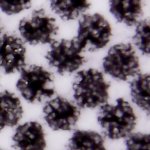I wrote a 1997 TAGA paper related to this subject so I will make some comments that might help.
It has been known for a very long time that the rolling length of a soft roller does not usually equal the calculated length based on the diameter of that soft roller. For a rubber roller, the tested length usually is longer than the calculated length based on the diameter. So this lead to the concept of the "effective diameter" of the roller, which is usually larger than the actual diameter of the roller.
A rubber roller, when squeezed, deforms the rubber. This stretches the rubber surface at the nip and this stretching of the surface of the roller gives it the extra length.
Blankets are a little different because they are not made of a solid flexible material such as the robber roller, which does not lose volume when distorted. Blankets due to their construction, will deform and lose volume and this makes mathematical analysis difficult but it is relative easy to just test the blanket to determine its "effective diameter".
My TAGA paper was based on studies I did back in the mid 1980s on a web press to support our use of "insetting", which is the process of registering the print to a preprinted repeat length in the substrate. Insetting is very critical when one is running stiffer board than if one would run more normal substrates.
In those studies, the blankets we used showed an effective diameter that was slightly larger than the calculated diameter of the blanket cylinder. Also the effective diameter could be changed by changing the impression squeeze and also by changing the tension before and after the impression nip.
My view is that the difference in feed rate would not directly affect the dots. The differences in feed length are on the order of a fraction of 1% and this should not cause visible slur. Less than 1% distortion of a dot, that does not print sharp in the first place is not an issue. But different feed rates might affect the mechanical linkages in the press, gear etc. which might indirectly cause issues.
I could see that blanket manufacturers could design blankets with both positive and negative effective diameters. This might be more helpful on sheetfed presses than on web presses since on a sheet fed press the sheet is only held in place by the grippers and the sheet can distort under different printing conditions. In a web press, the web itself tends to help stabilize the substrate.
In general it is more important to have matching blankets in a press. Is is not as critical for a web press but it would be for a sheetfed press.
Hope this helps.


















